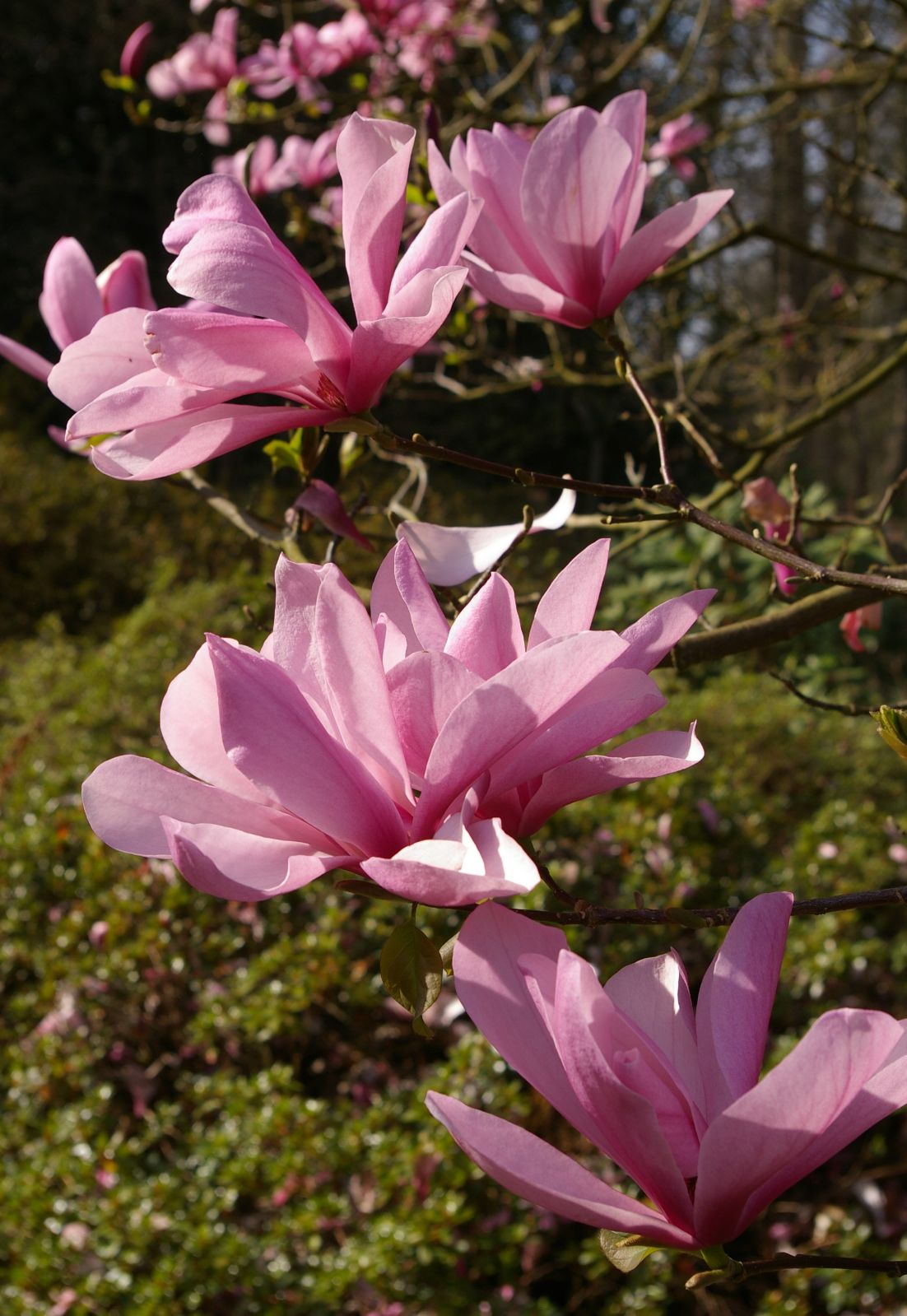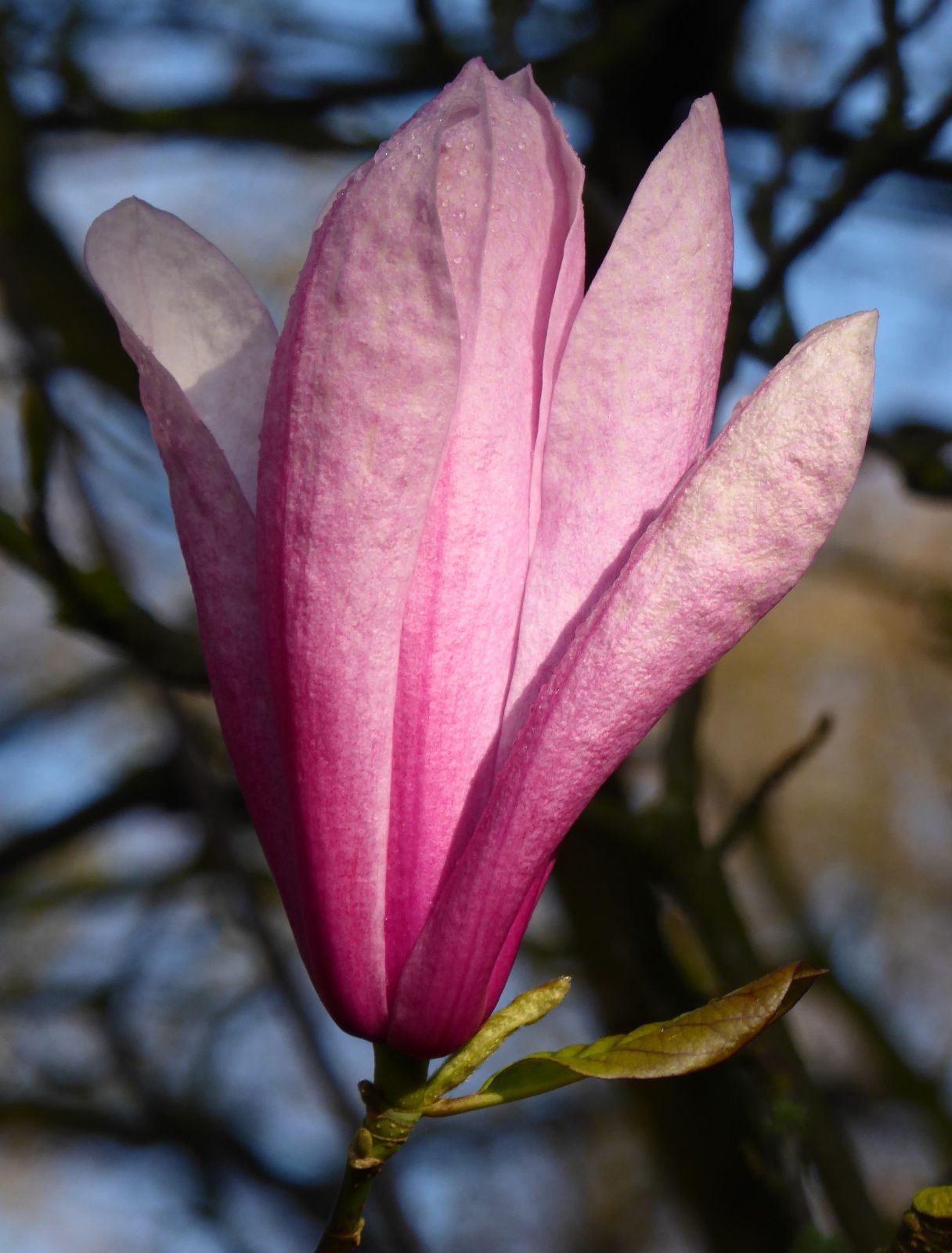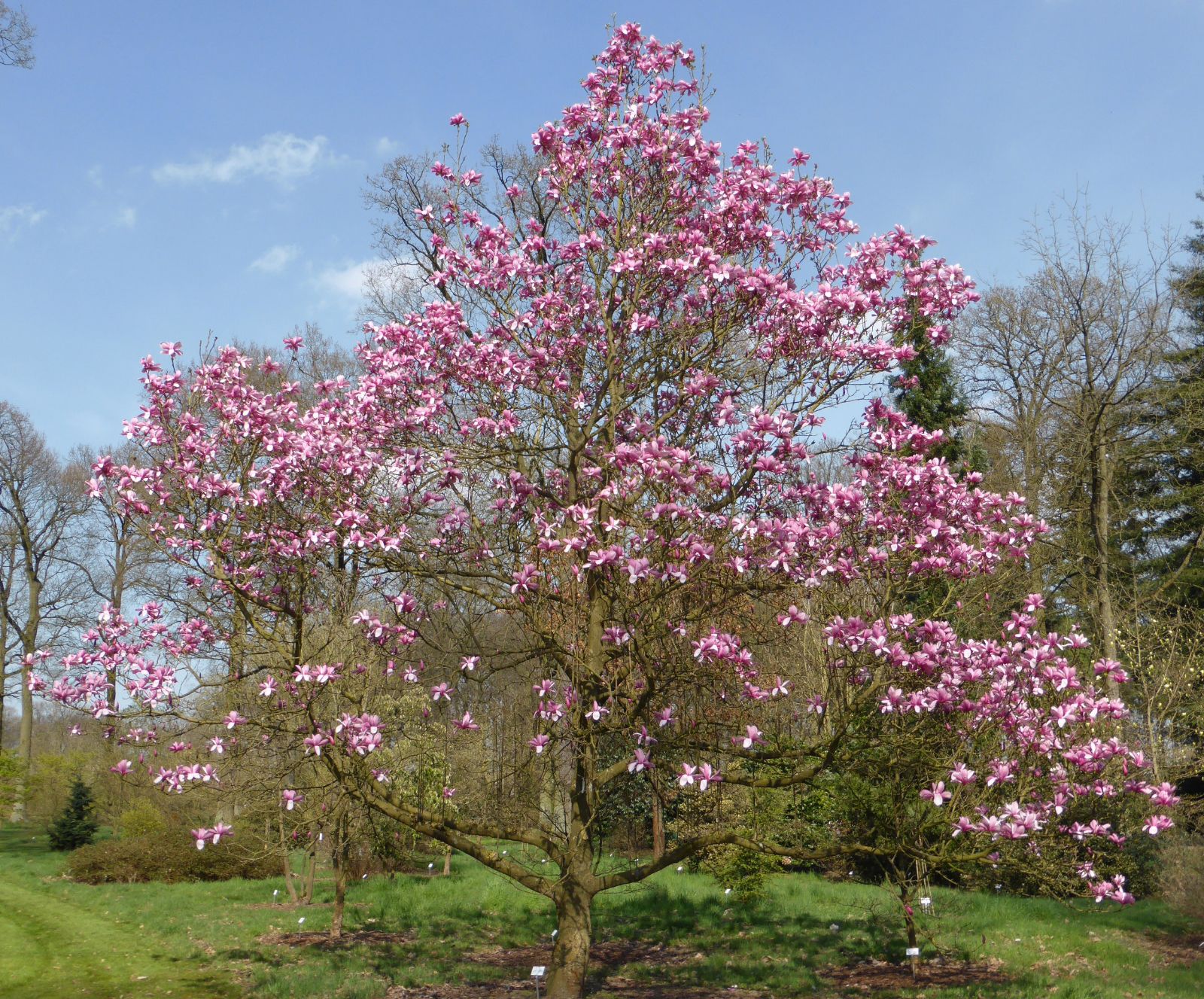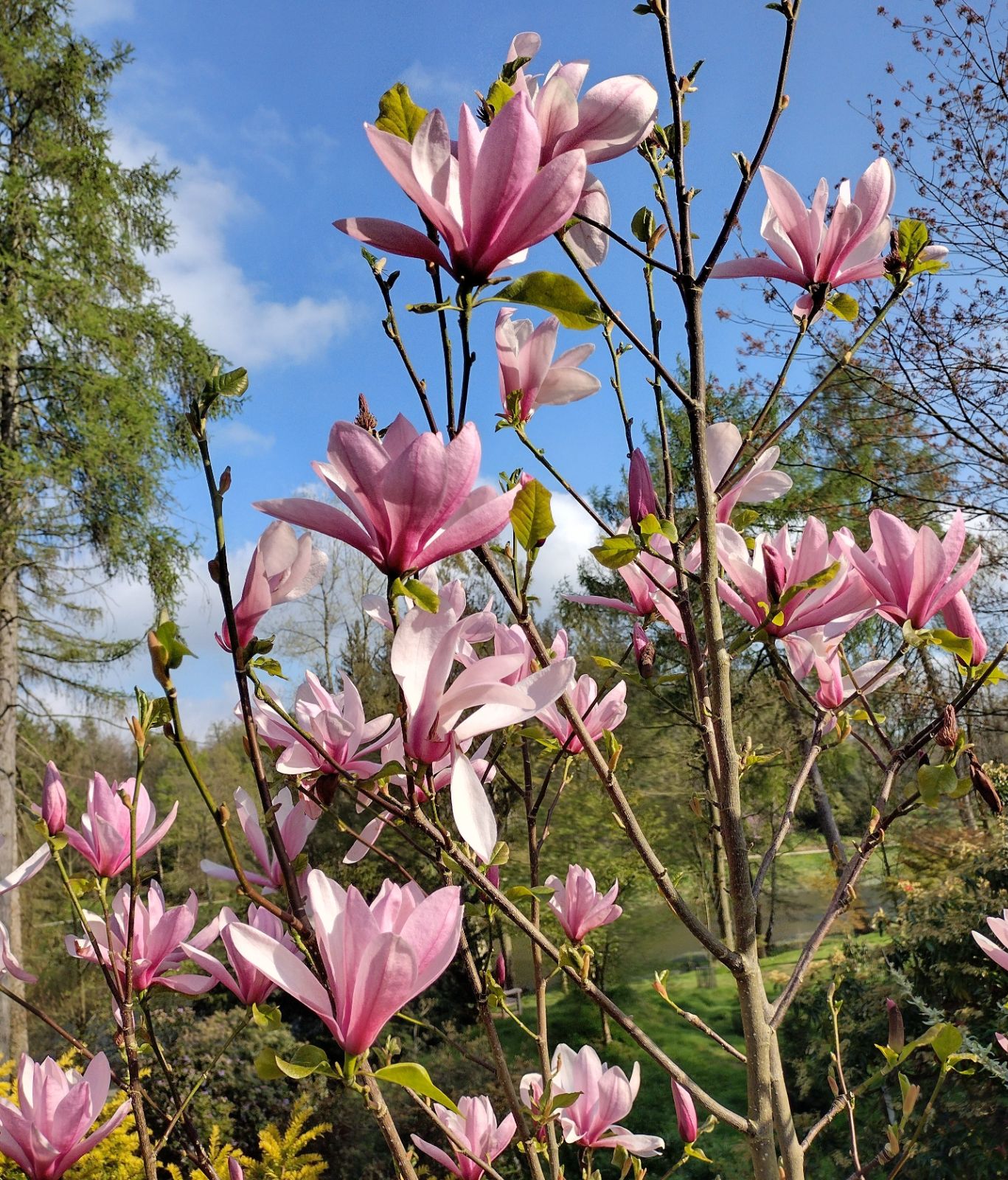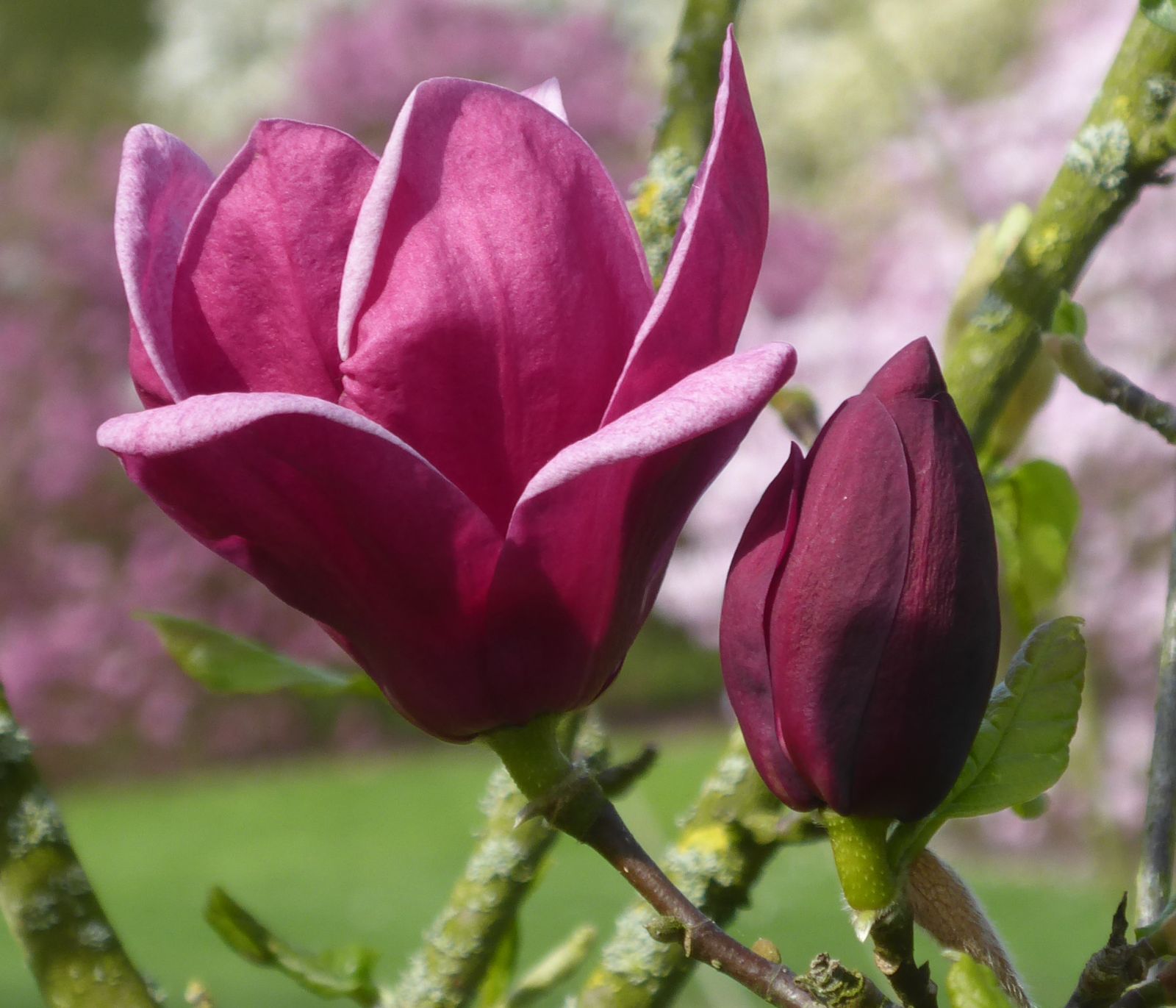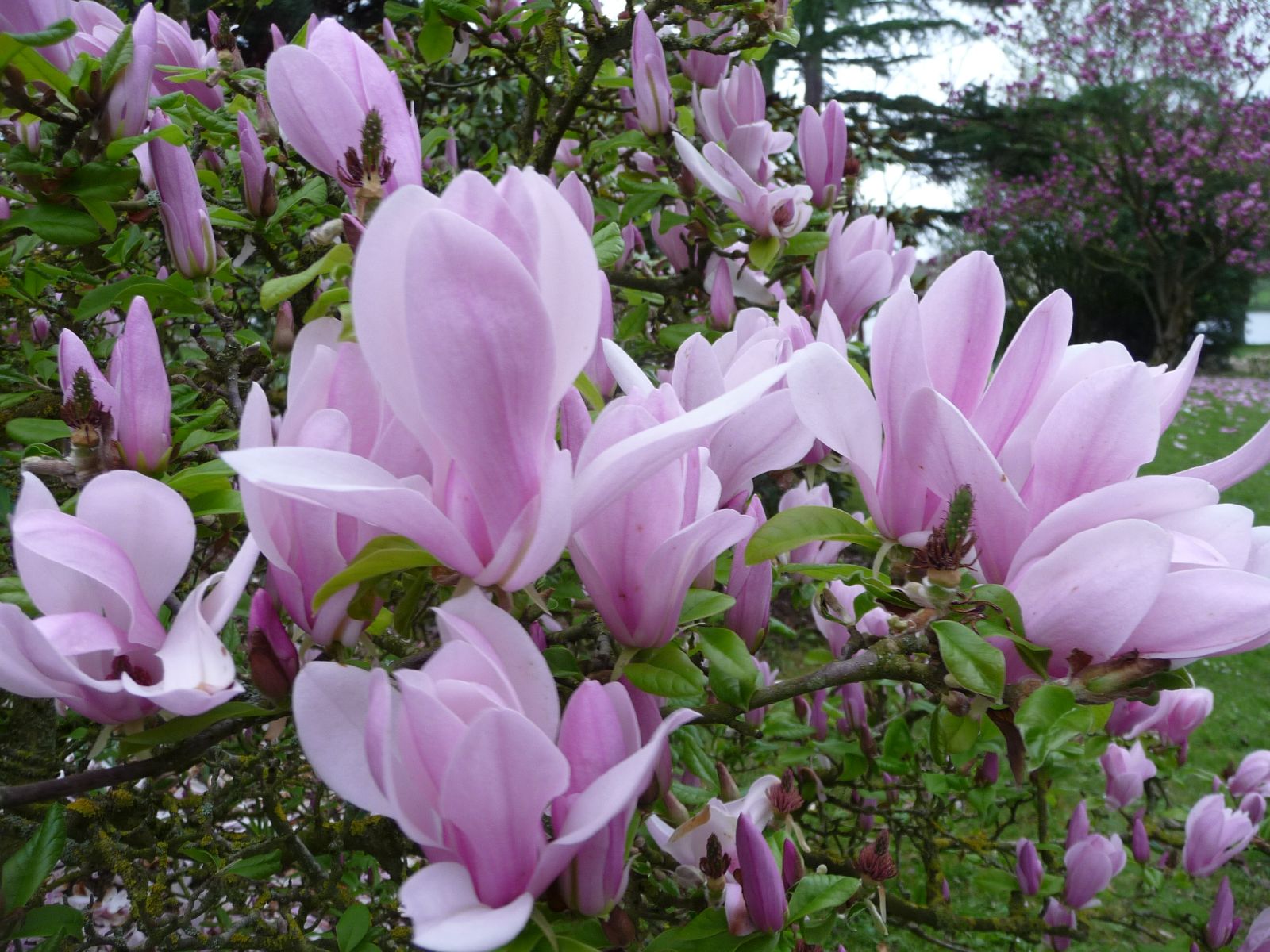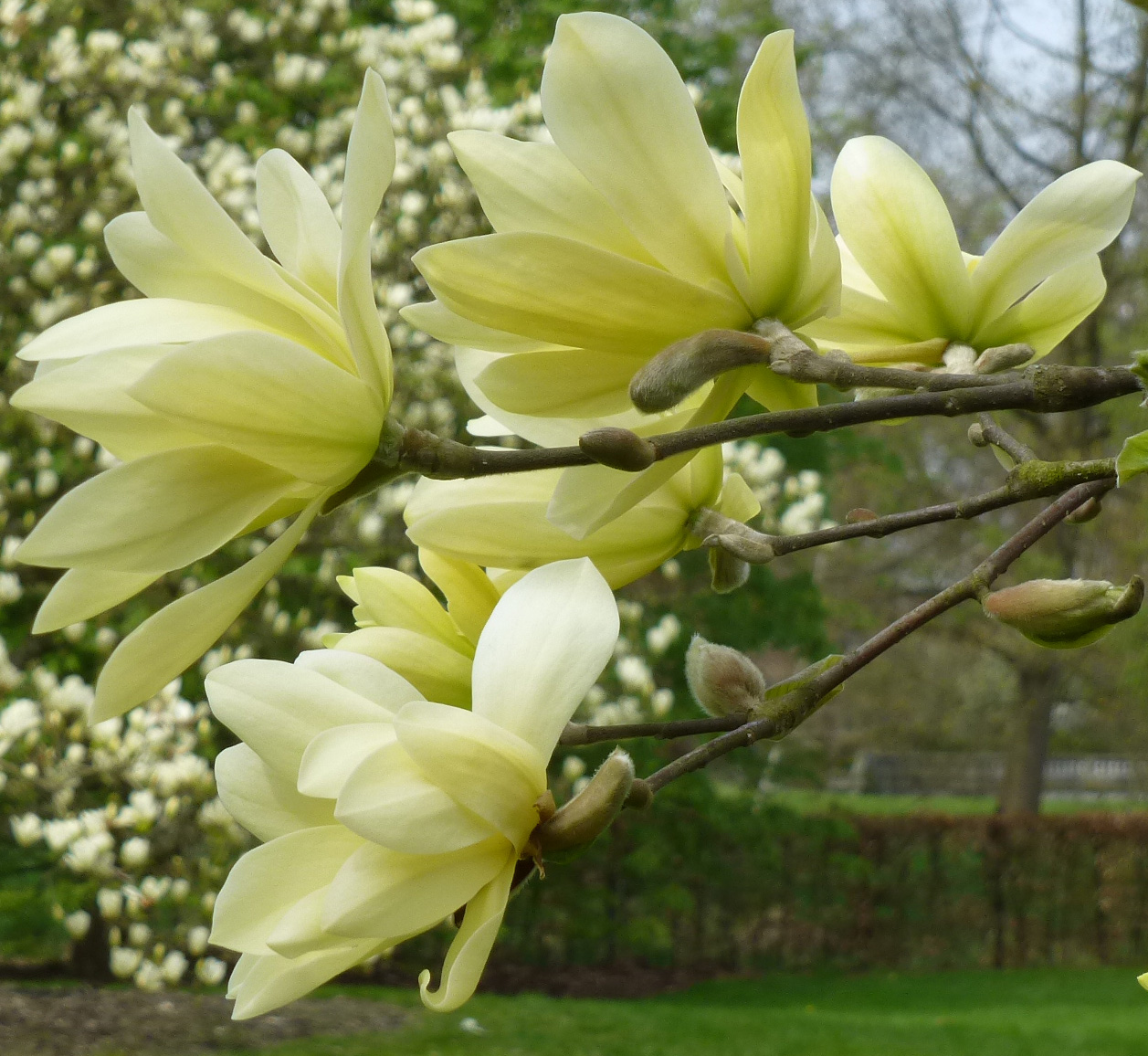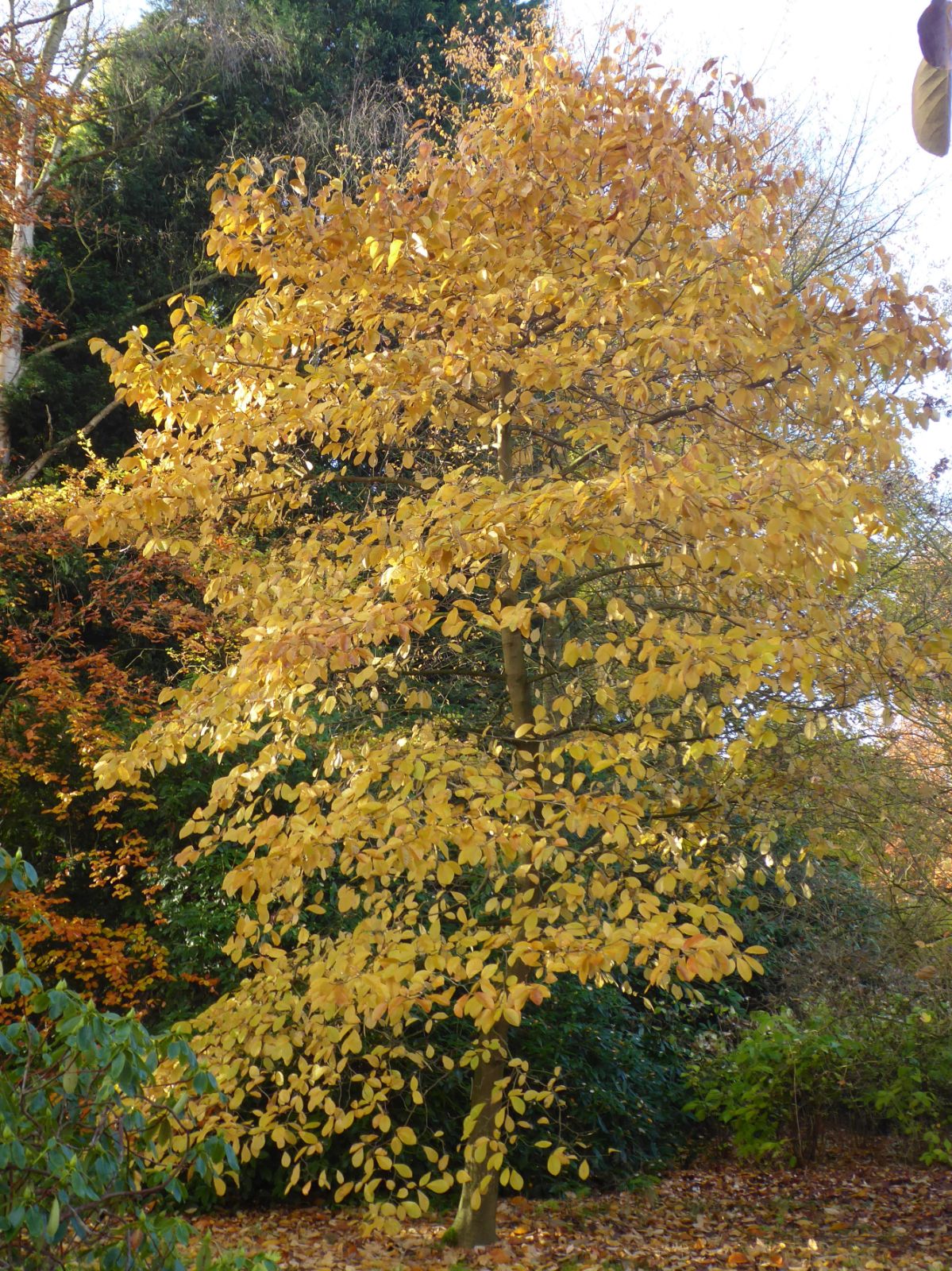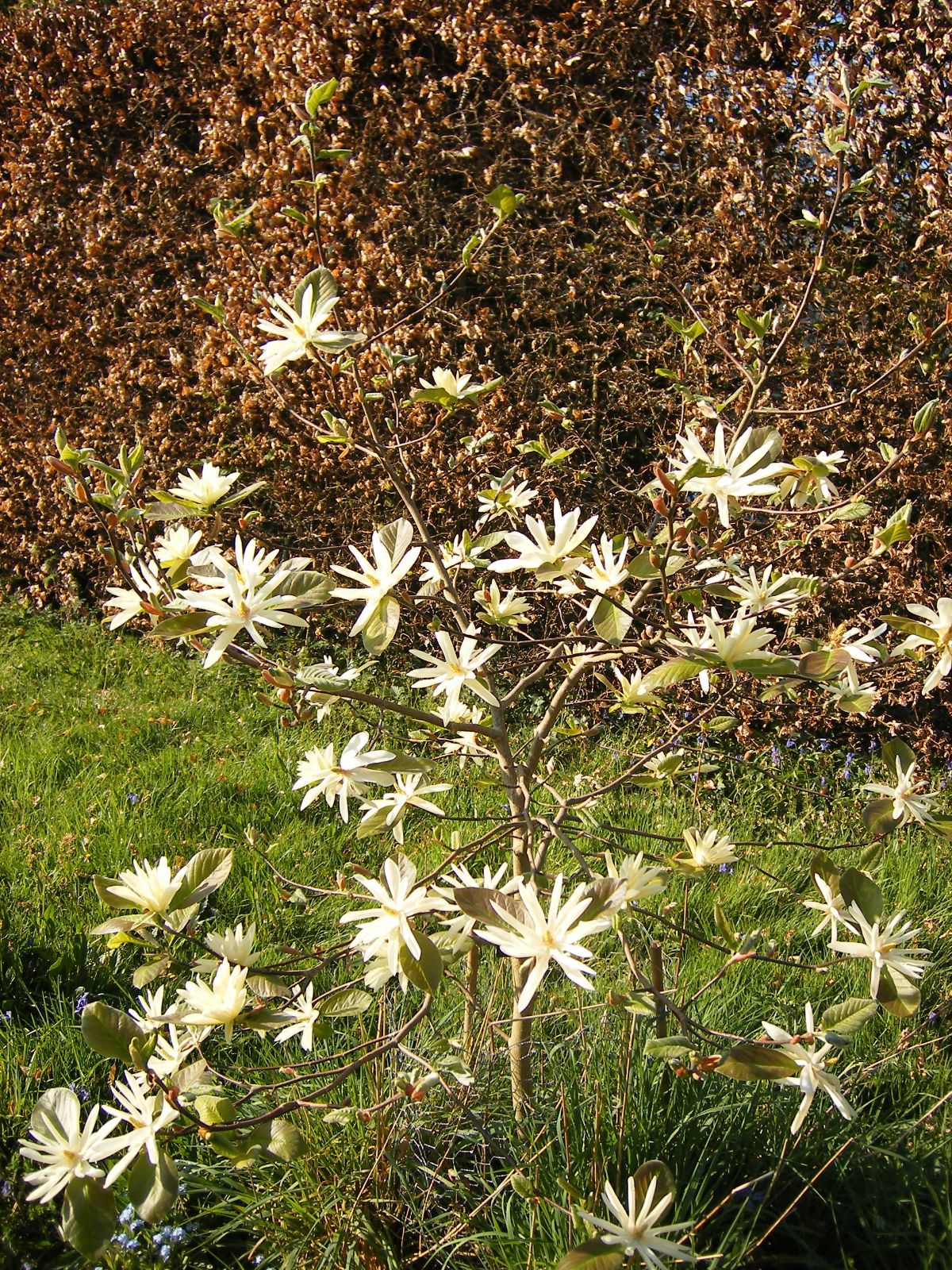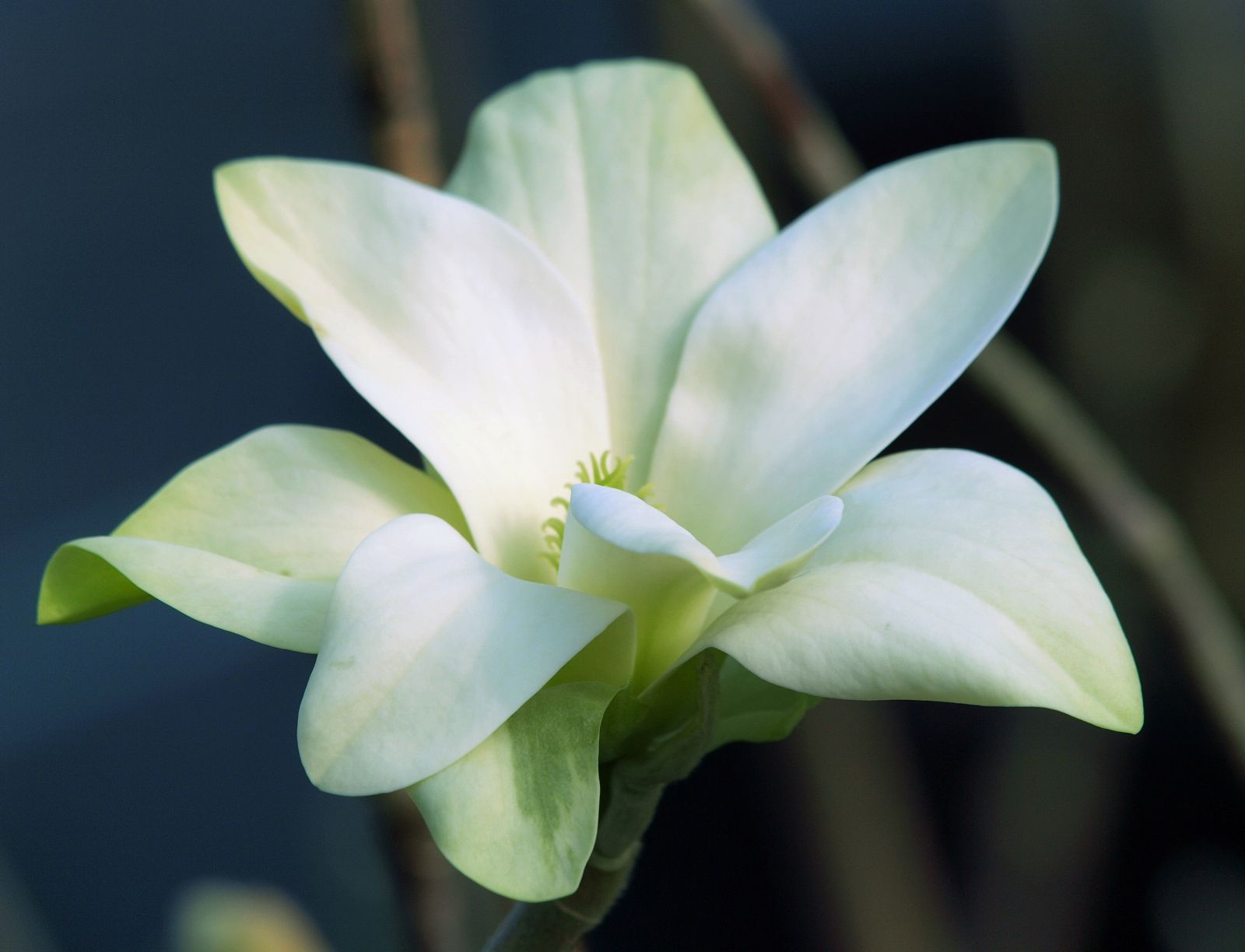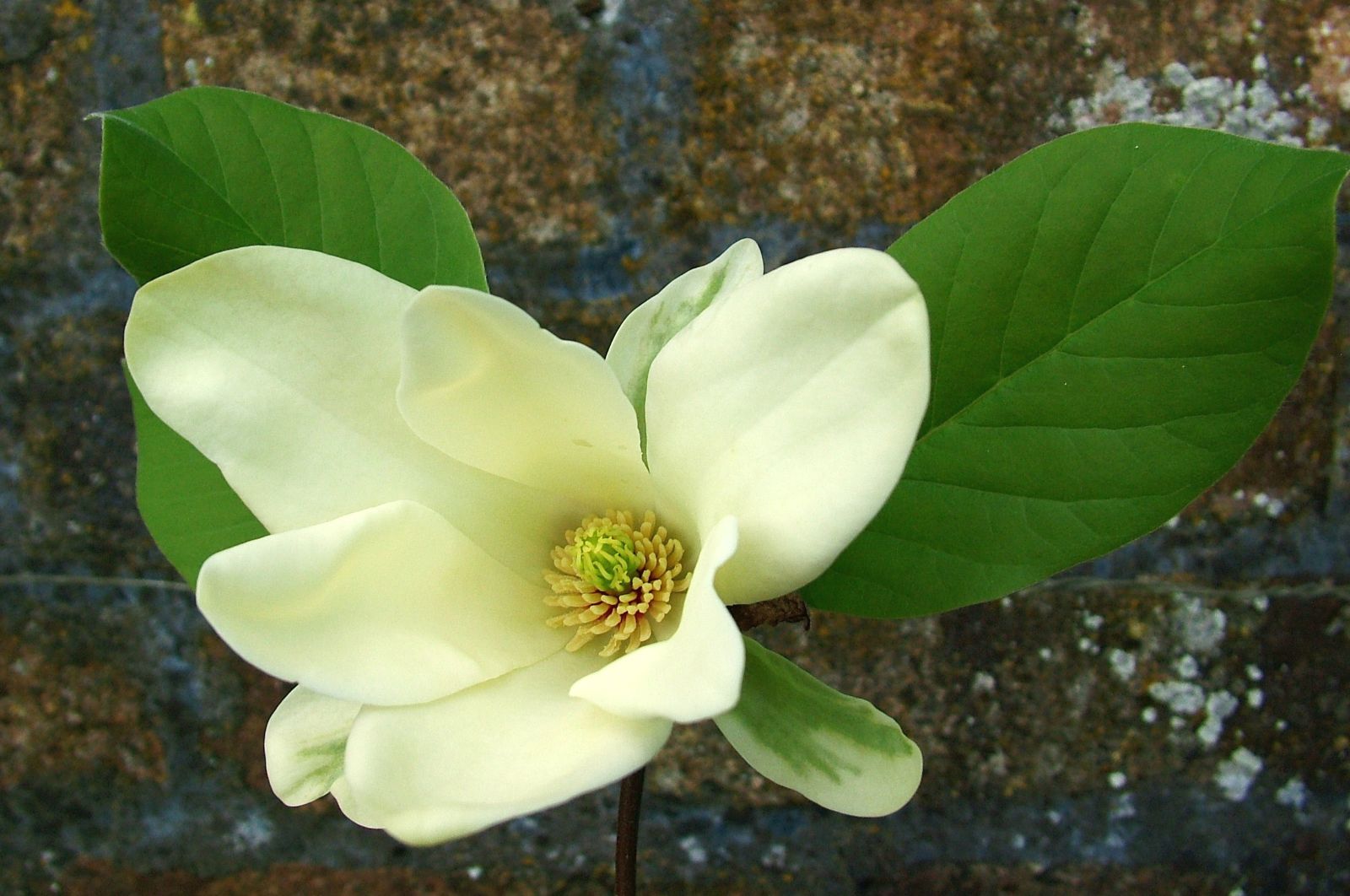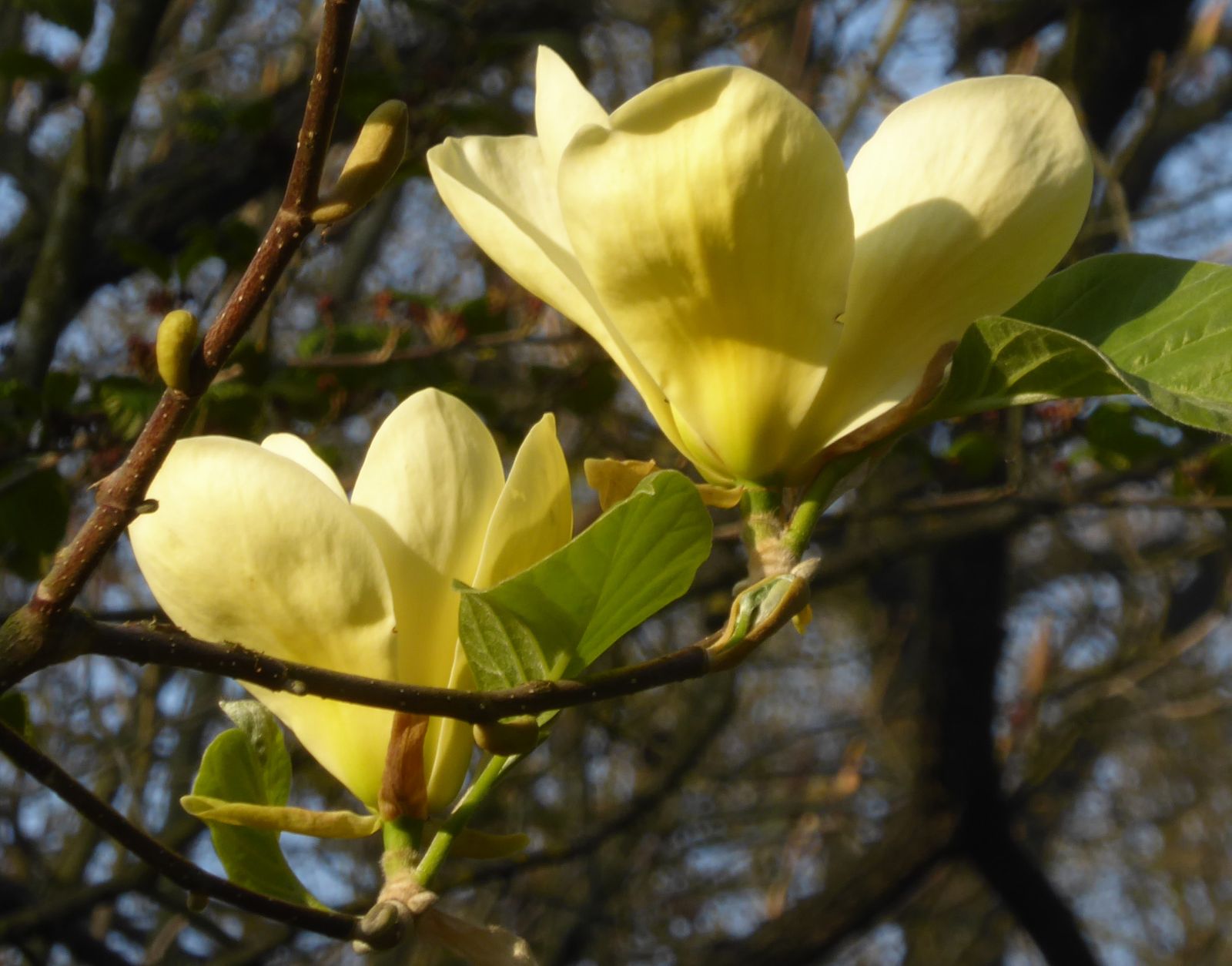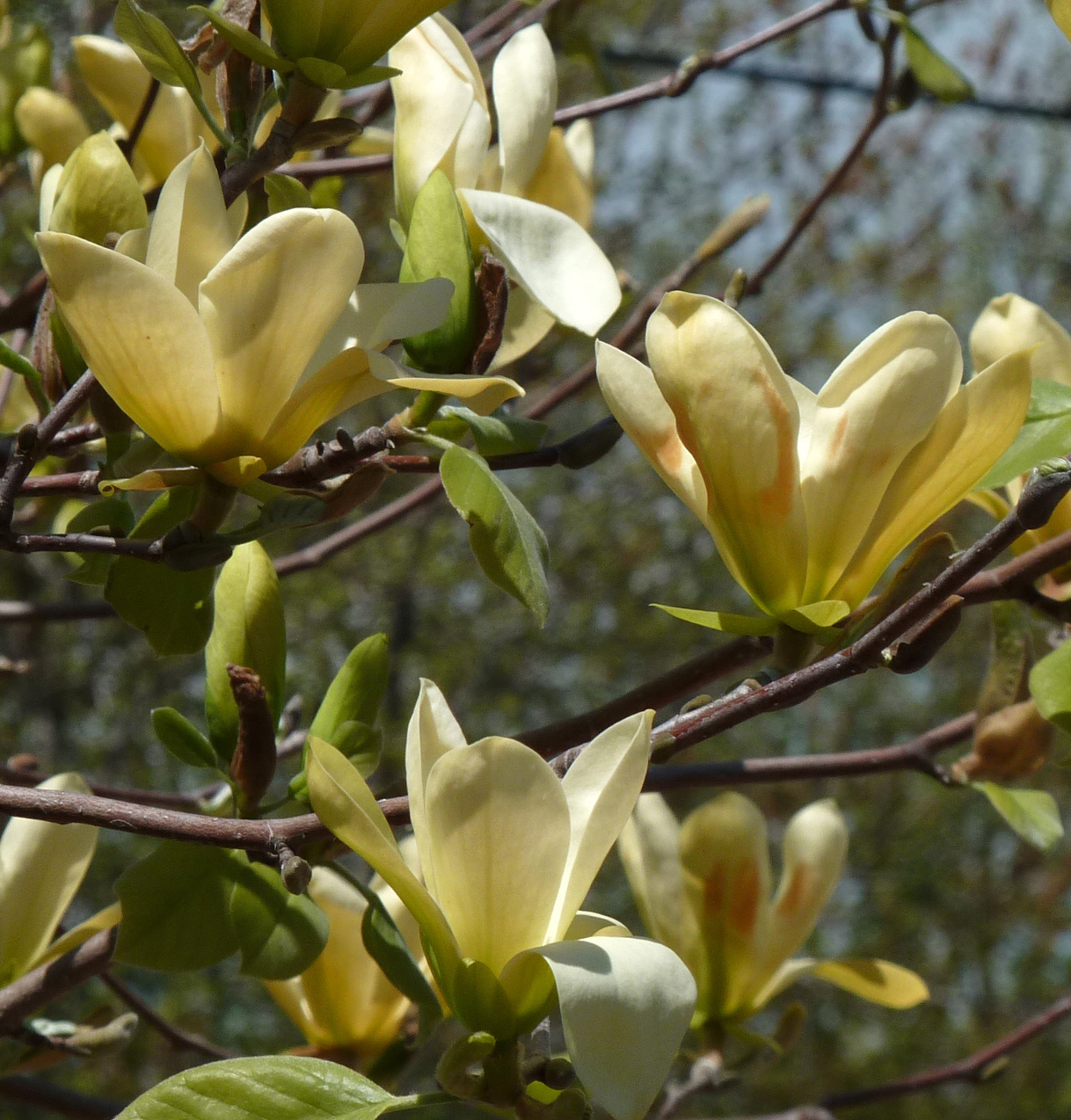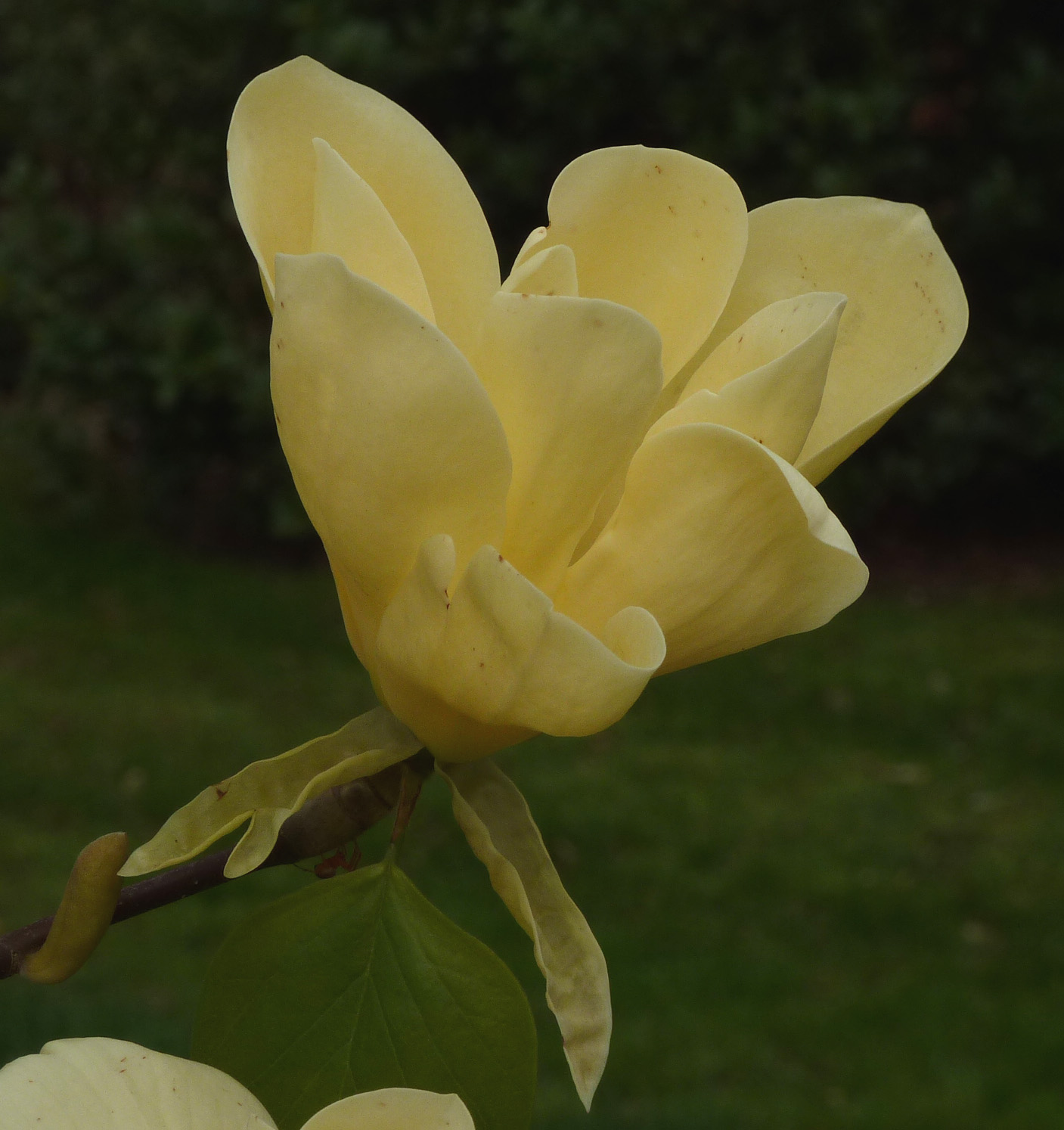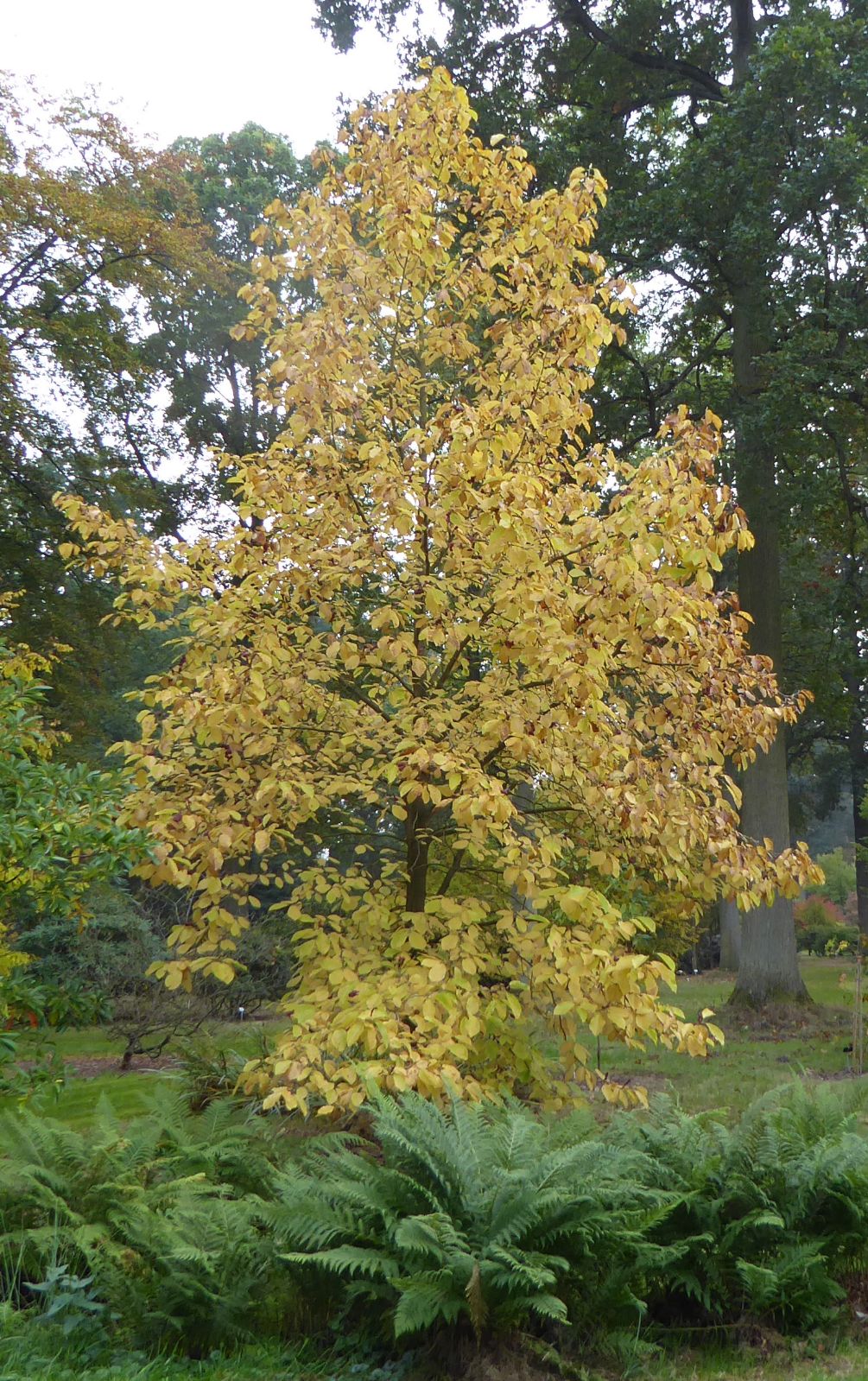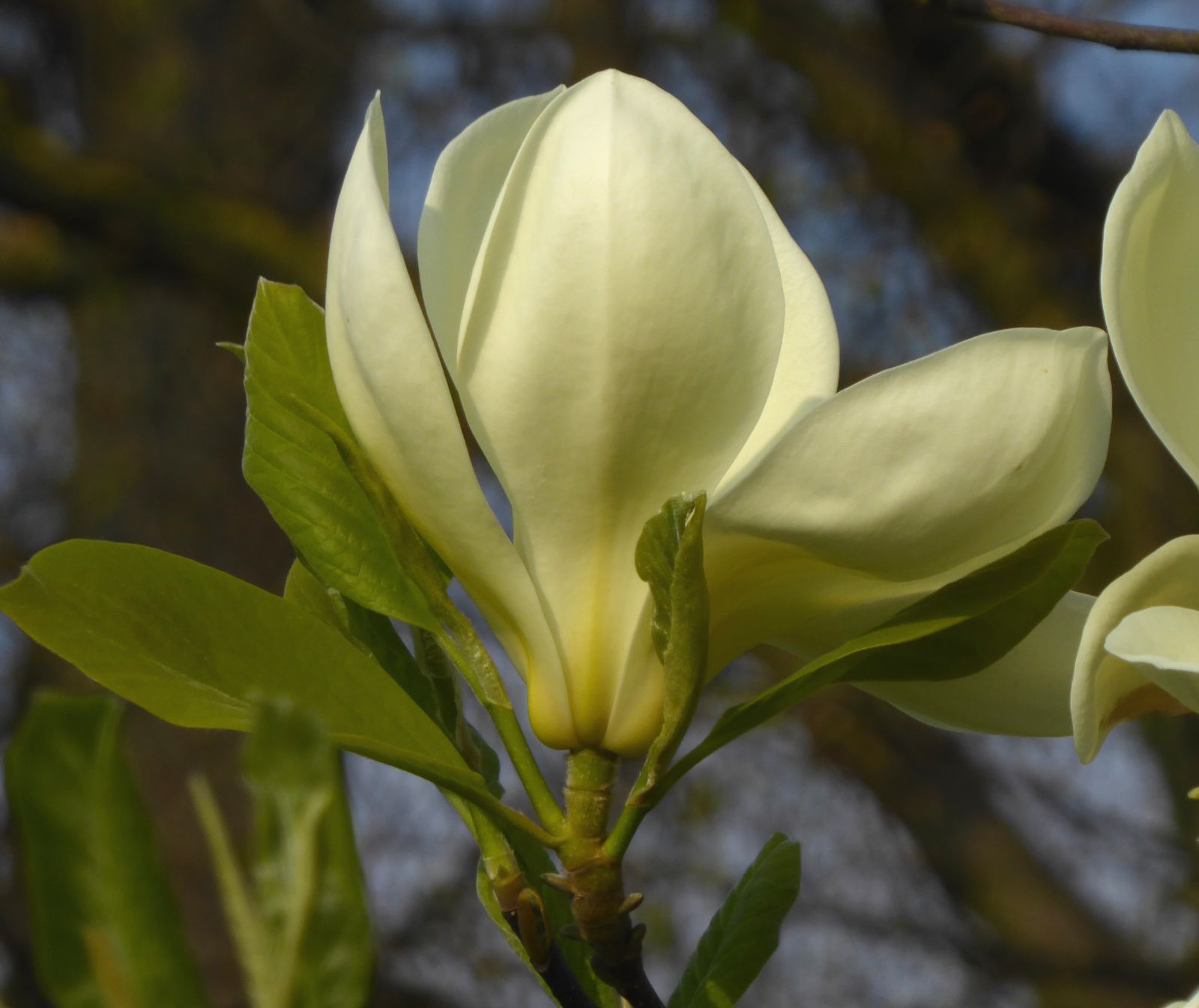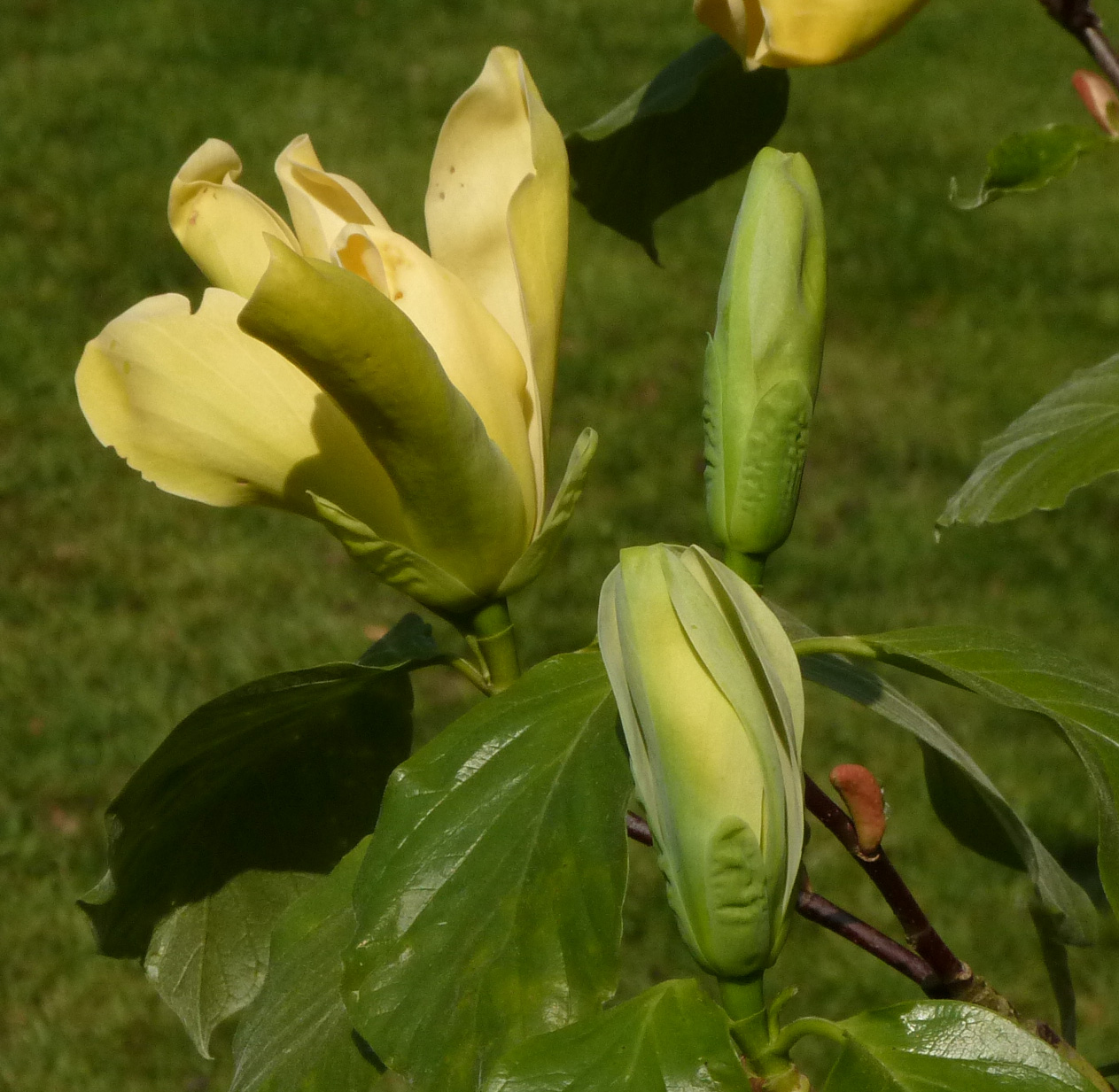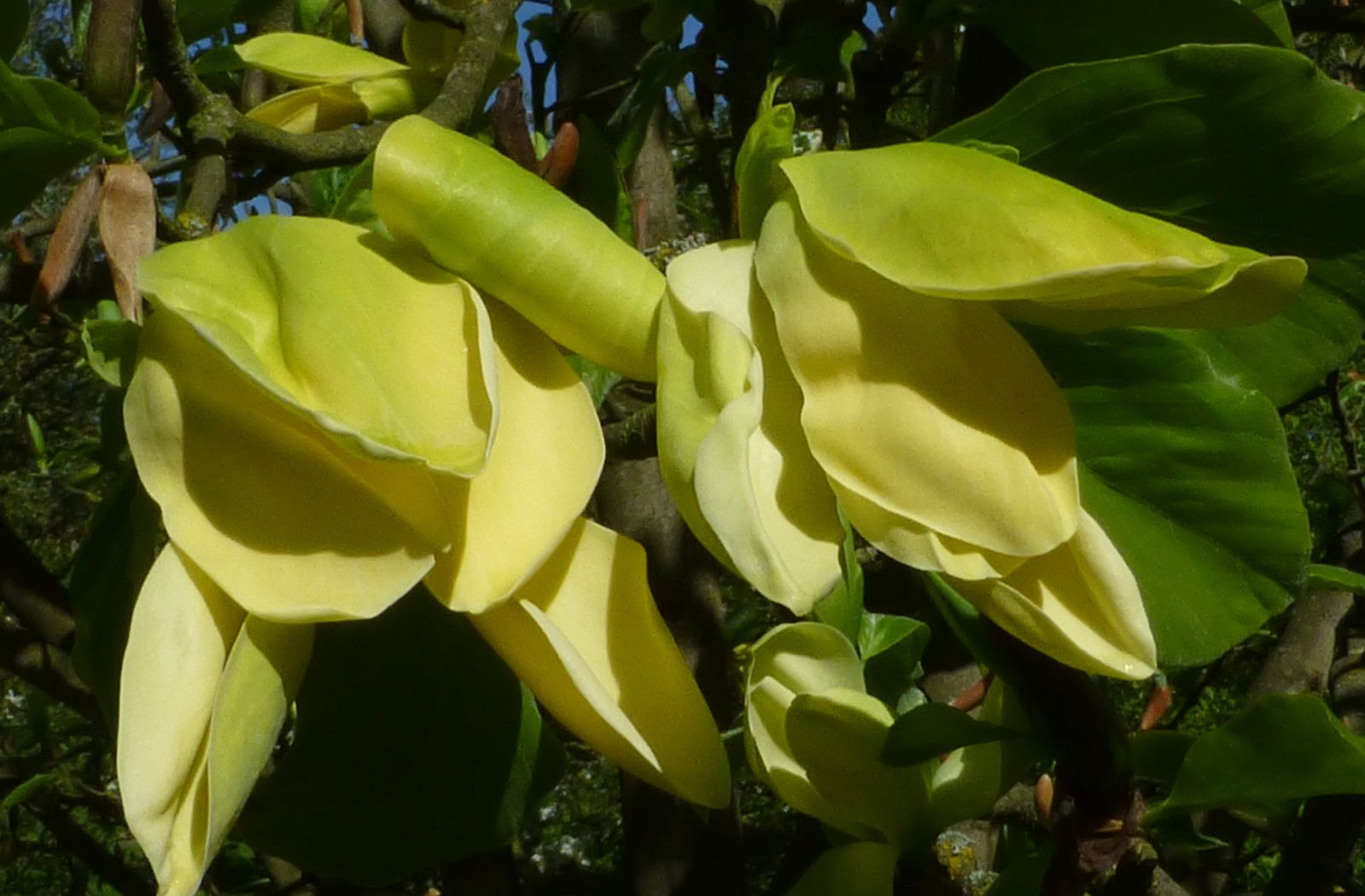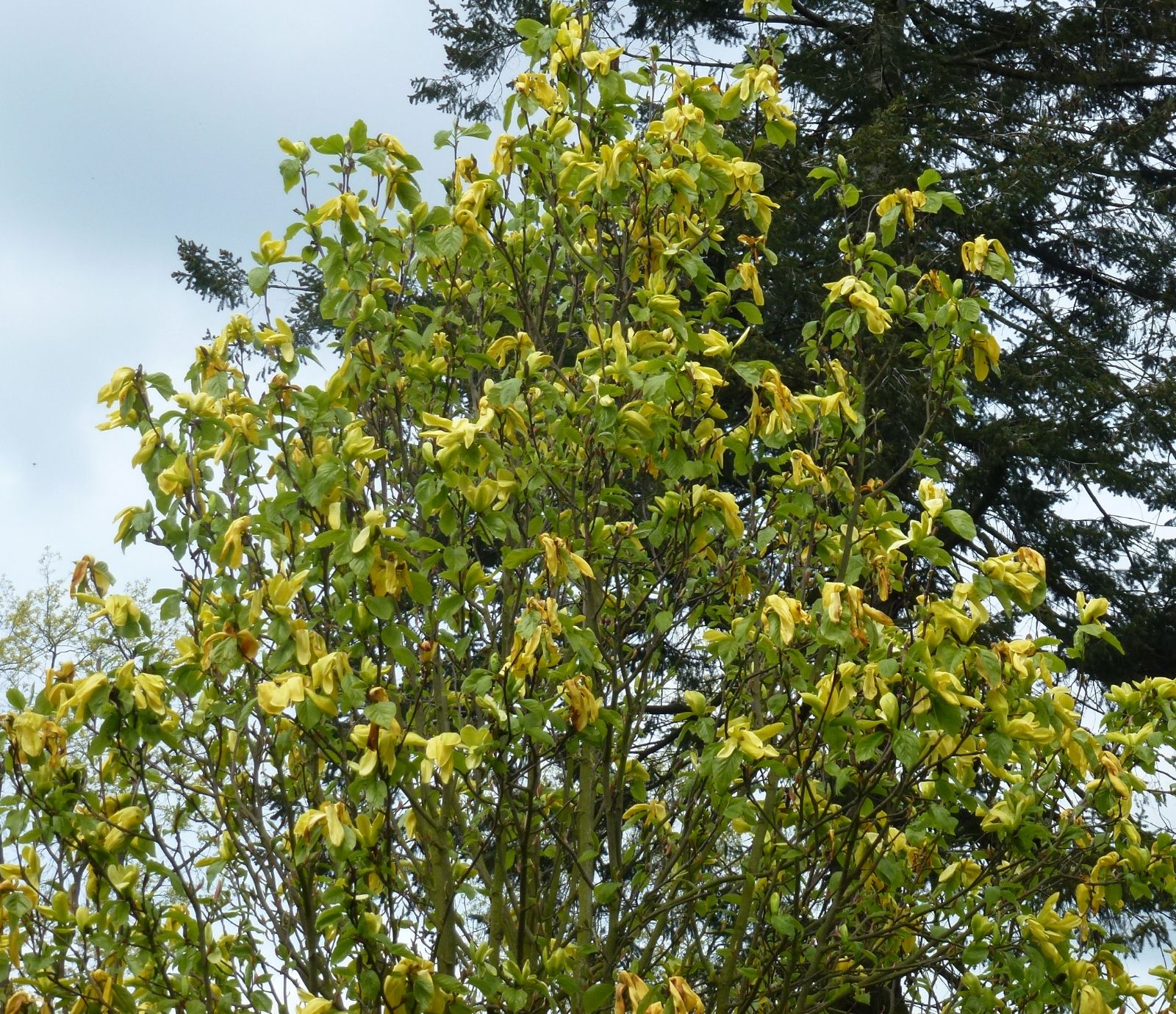Magnolia Cultivars G
Sponsor
Kindly sponsored by
The Roy Overland Charitable Trust

Credits
Julian Sutton (2022)
Recommended citation
Sutton, J. (2022), 'Magnolia Cultivars G' from the website Trees and Shrubs Online (treesandshrubsonline.
Genus
Infraspecifics
- 'Gail's Favourite'
- 'Galaxy'
- 'Galissonnière'
- 'GCCHU2008'
- 'Genesis'
- 'Genie'
- 'George Henry Kern'
- 'Gere'
- 'Ginter Spicy White'
- 'Gloriosa'
- 'Gold Crown'
- 'Gold Star'
- 'Golden Endeavor'
- 'Golden Gala'
- 'Golden Gift'
- 'Golden Girl'
- 'Golden Glow'
- 'Golden Joy'
- 'Golden Sun'
- 'Goldfinch'
- 'Goliath'
- 'Grace McDade'
- 'Gracilis'
- 'Green Bee'
- GREEN DIAMOND
- 'Green Mist'
- 'Gretel Eisenhut'
Other taxa in genus
- Magnolia acuminata
- Magnolia × alba
- Magnolia amabilis
- Magnolia amoena
- Magnolia aromatica
- Magnolia biondii
- Magnolia × brooklynensis
- Magnolia campbellii
- Magnolia cathcartii
- Magnolia cavaleriei
- Magnolia caveana
- Magnolia champaca
- Magnolia changhungtana
- Magnolia chapensis
- Magnolia compressa
- Magnolia conifera
- Magnolia Cultivars A
- Magnolia Cultivars B
- Magnolia Cultivars C
- Magnolia Cultivars D
- Magnolia Cultivars E
- Magnolia Cultivars F
- Magnolia Cultivars H–I
- Magnolia Cultivars J
- Magnolia Cultivars K
- Magnolia Cultivars L
- Magnolia Cultivars M
- Magnolia Cultivars N–O
- Magnolia Cultivars P
- Magnolia Cultivars Q–R
- Magnolia Cultivars S
- Magnolia Cultivars T
- Magnolia Cultivars U–V
- Magnolia Cultivars W–Z
- Magnolia cylindrica
- Magnolia dandyi
- Magnolia dawsoniana
- Magnolia de Vos and Kosar hybrids
- Magnolia decidua
- Magnolia delavayi
- Magnolia denudata
- Magnolia doltsopa
- Magnolia duclouxii
- Magnolia ernestii
- Magnolia figo
- Magnolia floribunda
- Magnolia × foggii
- Magnolia fordiana
- Magnolia foveolata
- Magnolia fraseri
- Magnolia fulva
- Magnolia globosa
- Magnolia × gotoburgensis
- Magnolia grandiflora
- Magnolia grandis
- Magnolia Gresham hybrids
- Magnolia guangdongensis
- Magnolia hookeri
- Magnolia insignis
- Magnolia Jury hybrids
- Magnolia × kewensis
- Magnolia kobus
- Magnolia kwangtungensis
- Magnolia laevifolia
- Magnolia lanuginosa
- Magnolia leveilleana
- Magnolia liliiflora
- Magnolia × loebneri
- Magnolia lotungensis
- Magnolia macclurei
- Magnolia macrophylla
- Magnolia martini
- Magnolia maudiae
- Magnolia nitida
- Magnolia obovata
- Magnolia officinalis
- Magnolia opipara
- Magnolia × proctoriana
- Magnolia × pruhoniciana
- Magnolia rostrata
- Magnolia salicifolia
- Magnolia sapaensis
- Magnolia sargentiana
- Magnolia sieboldii
- Magnolia sinensis
- Magnolia sinica
- Magnolia sinostellata
- Magnolia × soulangeana
- Magnolia sprengeri
- Magnolia stellata
- Magnolia tamaulipana
- Magnolia × thomsoniana
- Magnolia tripetala
- Magnolia × veitchii
- Magnolia virginiana
- Magnolia × wieseneri
- Magnolia wilsonii
- Magnolia xinganensis
- Magnolia yunnanensis
- Magnolia yuyuanensis
- Magnolia zenii
Our primary references for cultivar information are Jim Gardiner’s (2000) ‘Magnolias: a Gardener’s Guide’ and Matt Lobdell’s (2021) register of cultivars for Magnolia Society International. Further references are cited where relevant. Other important accounts of cultivars include Dorothy Callaway’s (1994) ‘The World of Magnolias’ and (in German) Beet Heerdegen and Reto Eisenhut’s (2020) ‘Magnolien und Tulpenbäume: Magnoliaceae’. Magnolia Society International’s journal ‘Magnolia’ is an ongoing trove of information.
'Gail's Favourite'
See Magnolia laevifolia ‘Gail’s Favourite’.
'Galaxy'
M. liliiflora 'Nigra' × M. sprengeri 'Diva'
Awards
AGM
RHS Hardiness Rating: H6
USDA Hardiness Zone: 5-9
Flowers precocious, late enough in spring usually to avoid frost, initially tulip-shaped, opening to 25 cm across, lightly fragrant; tepals 11–12, red-purple, a little lighter inside. A small tree with a single leader, upright and pyramidal, more spreading with age, suitable for planting in streets and confined sites; easily rooted from cuttings, and sometimes used as an understock for grafting other cultivars. From a cross made in 1963 by William Kosar, US National Arboretum, released 1980. Highly rated by Philippe de Spoelberch, Belgium (pers. comm. 2021). ‘Spectrum’ is a comparable but larger flowered sister seedling (US National Arboretum 2022; Edwards & Marshall 2019).
'Galissonnière'
See Magnolia grandiflora ‘Galissonnière’.
'GCCHU2008'
See Magnolia laevifolia ‘GCCHU2008’.
'Genesis'
See Magnolia sieboldii ‘Genesis’.
'Genie'
M. 'Sweet Valentine' × (M. × soulangeana 'Sweet Simplicity' × M. liliiflora 'Nigra')
RHS Hardiness Rating: H6
USDA Hardiness Zone: 5-9
Flowers goblet shaped, abundant, before the leaves; tepals to 12, dark purple-red. Compact, upright shrub to small tree. Lovely at its best, Edwards & Marshall (2019) note mixed reports in Britain, with branch die-back being a problem in some gardens. Selected by Vance Hooper, New Zealand, from a cross made in 1998. Plant Breeders’ Rights in New Zealand and Europe; US Plant Patent 20748P3.
'George Henry Kern'
M. stellata × M. liliiflora
Awards
AGM
RHS Hardiness Rating: H6
USDA Hardiness Zone: 5-9
Flowers initially on leafless shoots (mid-April in S England) but continuing for 6–8 weeks among the leaves; tepals 8–10, thick, in North America rose-pink outside, paler inside, from deep red-purple buds (soft pink from rose-pink buds in Britain). A compact, free-flowering medium shrub raised in the 1930s at Wyoming Nurseries, OH; introduced late 1940s, named by Carl Kern for his father killed on active service in 1945. The Royal Horticultural Society’s AGM confirms its qualities as a garden plant in Britain, but from a Belgian perspective Philippe de Spoelberch does not recommend it (pers. comm. 2021).
'Gere'
'Ginter Spicy White'
M. tripetala 'Bloomfield' × (M. sieboldii × M. macrophylla var. ashei)
Evergreen; flowers in May and June (E United States) from erect buds, cup-shaped before opening flat to ~20 cm across, white, fragrance described as ‘lemony-mint’ (Lobdell 2021); tepals 12; stamens dark pink. A large, broadly spreading shrub with almost sub-tropical foliage effect, raised by Bill Smith, VA, and named for the Lewis Ginter Botanical Garden where he is a volunteer. Hardiness not yet widely tested.
'Gloriosa'
See Magnolia grandiflora ‘Gloriosa’.
'Gold Crown'
(M. × brooklynensis 'Woodsman') × M. 'Sundance'
RHS Hardiness Rating: H5
USDA Hardiness Zone: 6-8
Flowers late, just before or with the new leaves, to 25 cm across; tepals 8–9, deeper yellow than ‘Sundance’ or ‘Elizabeth’. Leaves resembling M. acuminata, to 20 × 15 cm, with a distinctive wavy margin. An upright, small to medium tree raised by August Kehr, 1984.
'Gold Star'
M. acuminata 'Miss Honeybee' × M. stellata 'Rubra'
Awards
AGM
RHS Hardiness Rating: H6
USDA Hardiness Zone: 5-9
Flowers precocious; tepals to 14, creamy yellow, strap shaped; tolerant of some frost. Young leaves bronze-red, becoming green. Small to medium tree combining the upright tree form of M. acuminata with the side branching network of M. stellata. Raised by Phil Savage, MI, before 2000. Highly rated by Philippe de Spoelberch, Belgium (pers. comm. 2021).
'Golden Endeavor'
M. 'Sundance' × M. acuminata 'Miss Honeybee'
Synonyms / alternative names
Magnolia 'Golden Endeavour'
RHS Hardiness Rating: H6
USDA Hardiness Zone: 6-9
Flowers pale yellow flushed green at base, cup-shaped, ~10 cm across, just before or with the new leaves; tepals thick textured. A floriferous small, rounded tree with horizontal branches. Tetraploid raised by August Kehr, NC, 1988.
'Golden Gala'
M. acuminata × M. denudata
RHS Hardiness Rating: H6
USDA Hardiness Zone: 5-9
A later flowering but otherwise similar sister seedling to M. ‘Golden Sun’ (see below), apparently not registered by the breeder but sold in the European nursery trade.
'Golden Gift'
M. acuminata 'Miss Honeybee' × (M. acuminata × M. denudata)
RHS Hardiness Rating: H6
USDA Hardiness Zone: 5-9
Flowers rich yellow, with faint green flush at base, ~11 cm across, with the new leaves. Very floriferous, display lasting up to 4 weeks. Usually shrubby. Raised by David Leach, OH, before 1997.
'Golden Girl'
See Magnolia × brooklynensis ‘Golden Girl’.
'Golden Glow'
Magnolia acuminata ‘Golden Glow’
See Magnolia acuminata ‘Golden Glow’.
'Golden Joy'
See Magnolia × brooklynensis ‘Golden Joy’.
'Golden Sun'
M. acuminata × M. denudata
RHS Hardiness Rating: H6
USDA Hardiness Zone: 5-9
Flowers to 18 cm across, with the leaves; inner tepals yellow, outer ones green. Vigorous, floriferous small to medium tree. Raised by David Leach, OH, before 1996.
'Goldfinch'
M. acuminata 'Miss Honeybee' × M. denudata 'Sawada's Cream'
RHS Hardiness Rating: H6
USDA Hardiness Zone: 5-9
Flowers pale yellow, usually precocious, from late March (S England). A small, upright tree raised by Phil Savage, MI, before 1989.
'Goliath'
See Magnolia grandiflora ‘Goliath’.
'Grace McDade'
See Magnolia × soulangeana ‘Grace McDade’.
'Gracilis'
See Magnolia liliiflora ‘Gracilis’.
'Green Bee'
M. acuminata 'Miss Honeybee' × M. 'Gold Crown'
RHS Hardiness Rating: H6
USDA Hardiness Zone: 6-9
Flowers with or just before the new leaves; buds strikingly green, elongated; tepals yellow-green outside, pale yellow inside, long and heavy, tending to hang down. Small, upright tree. From a cross made by August Kehr, 1991; grown at Arboretum Wespelaar, selected by Philippe de Spoelberch who commends its vigour (pers. comm. 2021).
GREEN DIAMOND
See Magnolia Cultivars L ‘Lv Xing’.
'Green Mist'
See Magnolia × loebneri ‘Green Mist’.
'Gretel Eisenhut'
M. sargentiana var. robusta × (M. sargentiana var. robusta × M. campbellii)
RHS Hardiness Rating: H5
USDA Hardiness Zone: 7-9
Flowers precocious, very large and richer pink outside than the comparable ‘Caerhays Belle’. A small to medium tree, raised before 2000 and named for the wife of Swiss magnolia breeder Otto Eisenhut. Sometimes listed as pure M. sargentiana (Royal Horticultural Society 2022), but Eisenhut gives the above parentage, noting that the larger flowers reflect input from M. campbellii (Eisenhut 2021; Parco Botanico Eisenhut 2019).

